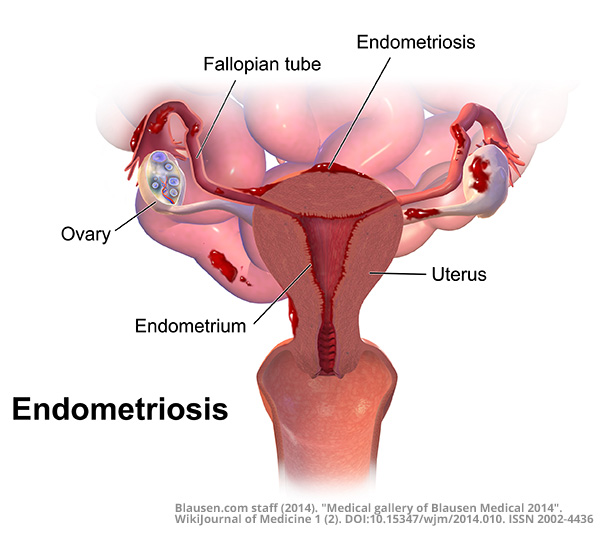Introduction: The Complex Reality of Endometriosis
By Moona Arabkhazaeli, MD
Minimally Invasive Gynecologic Surgeon
What is endometriosis?
Endometriosis is a disorder in which the tissue that lines the inside of the uterus - the endometrium - grows outside the uterus. Most commonly it is found on the ovaries, the fallopian tubes and the tissue lining your pelvis. Rarely it can be found in other areas, including the intestines, the bladder, and even the lungs or diaphragm. This endometrial tissue grows and bleeds with each menstrual cycle, resulting in production of substances that cause inflammation and pain, and eventually scar tissue.

What symptoms occur?
The most common symptom of endometriosis is severe pain associated with menstrual periods. Other symptoms include lower back pain, pain with intercourse, pain with bowel movements, bloating or nausea, and infertility.
How does endometriosis form?
Unfortunately the development of endometriosis is not fully understood and more research is needed. These are the main theories at this point.
- Retrograde menstruation: this is the idea that endometrial cells flow backwards through the fallopian tubes and into the abdomen during menses, resulting in endometriosis.
- Coelomic metaplasia: cells living outside the uterus originate from the same cells that develop into endometrial cells. In some cases, these cells transform into endometrial cells and become endometriosis.
- Lymphatic or vascular spread: endometrial cells may travel through blood vessels or lymphatic vessels into the abdomen and cause endometriosis.
- Genetic and immunologic factors result in stimulation of cells in the pelvis to develop into endometriosis.
How common is endometriosis?
If you have endometriosis you are not alone - it is estimated that it affects 10% of women on average. This number may be even higher, since many people go undiagnosed. The prevalence among the following specific groups are as follows:
- Women with no symptoms: 1-7%
- Women experiencing infertility: up to 50%
- Women seeking care for chronic pelvic pain: up to 70%
How do I know if I have it?
Since the symptoms of endometriosis can be vague and confused for other disorders, there is often a delay of diagnosis. Studies report an average diagnostic delay of 7 to 12 years in women with endometriosis. The first step in exploring this diagnosis is to advocate for yourself, and raise the issue with your doctor. Diagnostic strategies for endometriosis will be discussed at a future post.
Topics
Share this page:
About the Author
Moona Arabkhazaeli, MD
Minimally Invasive Gynecologic Surgeon
 Dr. Moona Arabkhazaeli brings specialized expertise in Minimally Invasive Gynecology Surgery to her role at Minnesota Women's Care. Her dedicated focus lies in areas such as abnormal uterine bleeding, endometriosis, pelvic pain, and fibroids. Dr. Arabkhazaeli's expertise extends to minimally invasive surgical techniques, which optimize patient outcomes by reducing complications and expediting recovery. With a patient-centered approach, she emphasizes compassionate and personalized care, aiming to empower women in their healthcare journey. Dr. Arabkhazaeli's dedication to innovation and her proficiency in minimally invasive techniques underscore her commitment to delivering optimal outcomes for her patients.
Dr. Moona Arabkhazaeli brings specialized expertise in Minimally Invasive Gynecology Surgery to her role at Minnesota Women's Care. Her dedicated focus lies in areas such as abnormal uterine bleeding, endometriosis, pelvic pain, and fibroids. Dr. Arabkhazaeli's expertise extends to minimally invasive surgical techniques, which optimize patient outcomes by reducing complications and expediting recovery. With a patient-centered approach, she emphasizes compassionate and personalized care, aiming to empower women in their healthcare journey. Dr. Arabkhazaeli's dedication to innovation and her proficiency in minimally invasive techniques underscore her commitment to delivering optimal outcomes for her patients.
If you or someone you know is experiencing symptoms of endometriosis, visit mnwcare.com or call 651-600-3035.
Appointments
